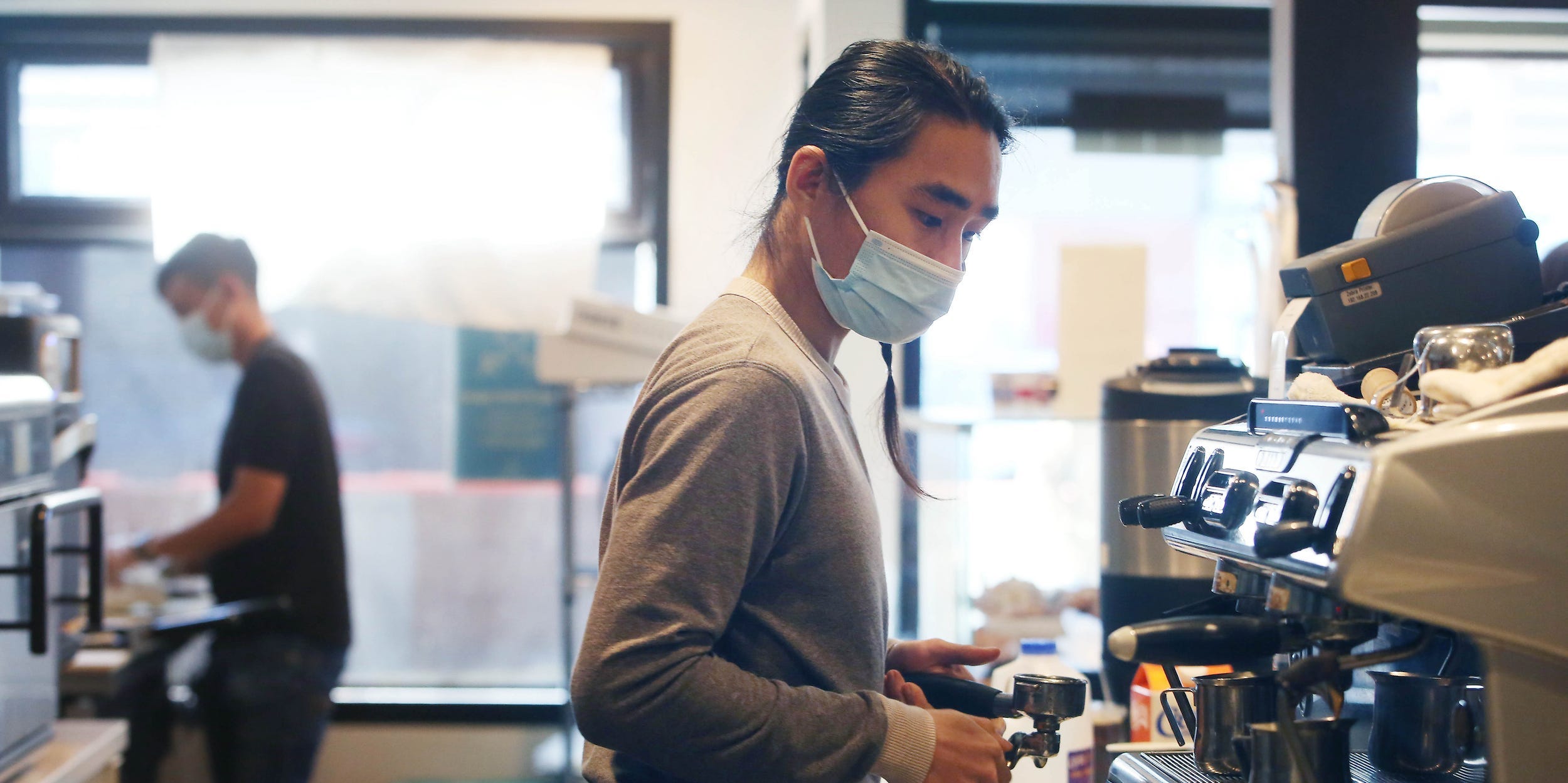
Lea Suzuki/The San Francisco Chronicle/Getty Images
- IHS Markit’s gauge of service-sector activity rose to 59.8 last month from 58.3.
- The reading signals the fastest rate of expansion since 2014.
- Still, ISM’s industry gauge declined as supplier pressures and costs cut into business optimism.
- Visit the Business section of Insider for more stories.
A popular measure of US service-sector growth improved in February to signal the fastest rate of expansion since July 2014, yet mixed signals led to dimming business optimism.
IHS Markit’s purchasing managers’ index for the service sector rose to 59.8 last month from 58.3. The jump in business activity was primarily driven by an upswing in demand and a rise in new business, the firm said. Readings above 50 indicate growth, while those below signal contraction.
New orders grew at the steepest pace since 2018, and employment at service businesses edged higher. The continued decline in daily new COVID-19 cases and vaccine distribution buoyed customer confidence through the month, according to the report.
“Financial services and business services are faring well, accompanying a strong manufacturing recovery,” Chris Williamson, chief business economist at IHS Markit, said. “Even some hard-hit consumer-facing sectors are enjoying some loosening of restrictions or adapting to life with the virus.”
Still, the service industry is far from a full recovery, and other gauges of activity point to a worrying slowdown. Cost pressures remained elevated due to supply-chain price hikes and PPE expenses. The rate of input-cost inflation rose to its strongest level since 2009. To pad against the increased costs, firms lifted selling prices at the second-quickest rate in data going back to 2011.
Business optimism also dipped despite the leap in activity. While service providers remain largely hopeful, concerns around the length of the pandemic and its fallout led confidence to moderate, IHS said.
Separately, the Institute for Supply Management's own service PMI declined in February. The gauge dipped to 55.3 from 58.7, its lowest point since May. Measures of business activity, new orders, and employment also showed slower growth. Similar to trends seen in IHS Markit's report, prices and the backlog of new orders showed faster growth. Respondents to ISM's survey cited "significant concern" over supplier costs and "problematic" shipment delays.
"We were excited [in January], when orders and activity were increasing. Now, they are not receding, but they're flat month-over-month. That's not the rebound we were hoping for," one firm in the professional and technical services sector said.
The conflicting reports place the service industry at a crossroads. While the jump in demand marks a sharp improvement from the weak activity seen earlier in the pandemic, the steep increase in prices threatens to curtail the rebound before the industry fully recovers. Services account for roughly 70% of US output, according to the Bureau of Economic Analysis, and the segment faced a much harsher hit from the health crisis than manufacturers.
Supplier pressures and price increases will be the indicators to watch in the months ahead as restrictions are expected to ease and activity improves further, Daniel Silver, an economist at JPMorgan, said.
"Despite the relatively downbeat news in this latest ISM survey, we think the service sector will keep recovering over time as the burdens associated with COVID-19 ease," Silver said in a note, adding the IHS Markit release points to more favorable trends.
